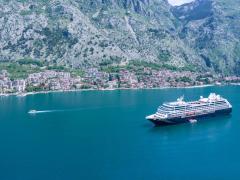Cruise passengers are getting increasingly younger, according to data shared by Cruise Lines International Association (CLIA). According to the ‘2024 State of the Cruise Industry’ report, 36% of passengers were under the age of 40. This included 16% below the age of 20 and 20% between the ages of 20 and 39. The average age was 46,5 years old.
Comfort and affordability
Jacqui Mabuza, Head of Commercial at Royal Caribbean has noticed a shift towards younger cruise passengers, driven by cost-effectiveness and convenience.
“Cruising trends among younger travellers are certainly driven by an increased awareness of cruise holidays and the value proposition of seeing multiple destinations cost effectively. The idea of destination hopping with one vessel which could also be a stimulant in this market,” said Mabuza.
Nirosha Sidat, Norwegian Cruise Line Country Manager: Africa believes that comfort and convenience are the main factors. “Cruising allows you to maximise your holiday time and visit multiple destinations without the constant need to pack and unpack, or navigate airports, security, shuttles and different hotels.
“The all-inclusive nature of cruising is especially important for younger cruisers on a budget,” said Sidat.
In South Africa, there are still more solo travellers, couples and bucket-list cruisers. “Millennials and Gen Z are more likely to cruise solo than any other generation. Cruises have caught up and are happy to offer solo accommodation,” said Sidat.
With 16% of cruise passengers under the age of 20, cruises are a popular holiday option for families. “With the value proposition and the accessibility for families, cruises become a one-stop venue for the family and covers all the aspects people need for a holiday with children. We’re seeing a lot of ships catering for this dynamic of families with cabin configurations and activities on board,” said Ross Volk, MD of MSC Cruises South Africa.
Experiential travel over traditional holidays
Younger cruise passengers are influenced by experiential travel options, opting for an alternative to traditional resort holidays. “Diverse itineraries and shore excursions offer a layer of experiential travel that Millennials and Gen Z are looking for. Today’s itineraries offer richer onboard experiences and shore excursions with local guides offering insights into a destination’s history, traditions and stories. Some cruises also offer a variety of enrichment programmes, including culinary classes, art workshops and lectures,” said Sidat.
The post-pandemic boom
Both Sidat and Mabuza have noticed that since the pandemic, more young travellers have taken up cruising. “The profile of cruisers has been getting steadily younger over 20 to 30 years, but we saw a big shift after COVID-19. Cruising bounced back quickly, and it bounced back younger than before,” said Sidat.
MSC has specifically noticed this shift in South Africa. “The average age of our cruiser for the last five or six years has been 45 so there is definitely a shift to the younger generation in our statistics,” said Volk.
Broader trends
There are other trends in the demographics of cruise passengers that are also shaping the cruise industry in South Africa.
“One of the more interesting demographics is 60% of our travellers are female which is something very interesting for us to explore and cater for,” said Volk.
Additionally, Mabuza has noticed a growing black middle class that is enquiring and booking more international cruises. “This demographic also recognises that the ship itself is a destination and is keen to explore the brands we represent as Cruises International,” she said.













